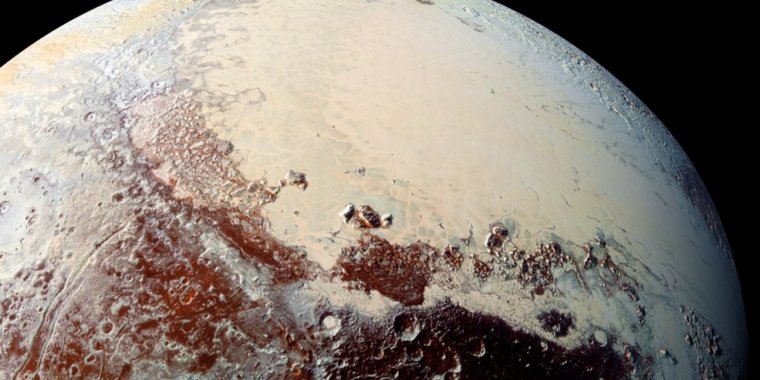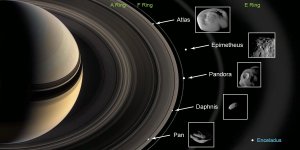| News / Space News |
Scientists Probe Mystery of Pluto’s Icy Heart
Scientists are offering several new scenarios to explain the formation of Pluto’s frozen heart-shaped feature.

This high-resolution image shows the bright expanse of the western lobe of Pluto’s “heart,” or Sputnik Planitia, which is rich in nitrogen, carbon monoxide and methane ices. ![]()
Research by University of Maryland astronomy professor Douglas Hamilton and New Horizons colleagues, shows that this nitrogen ice cap could have formed early on, when Pluto was still spinning quickly, and did not necessarily require an impact basin.
“Once the ice cap forms, it provides a slight asymmetry that either locks toward or away from Charon when Pluto’s spin slows to match the orbital motion of the moon,” Hamilton said.
Sputnik Planitia’s initial location could be explained by Pluto’s complex climate, itself forced by the 120 degree tilt of Pluto’s spin axis. Modeling Pluto’s temperatures showed that when averaged over Pluto’s 248-year orbit, the latitudes near 30 degrees north and south emerged as the coldest places, far colder than either pole.
Ice would have naturally formed around these latitudes, including at the center of Sputnik Planitia, which is located at 25 degrees north latitude.
Hamilton’s model also showed that a small ice deposit naturally attracts more ices by reflecting solar light and heat. As a result, temperatures there remain low, which attracts more ice, and the cycle repeats.
Called the runaway albedo effect, this phenomenon would eventually lead to a single dominating ice cap, like the one observed on Pluto’s heart.
Under Hamilton’s scenario, the ice cap may have been heavy enough to sink a few miles or kilometers into Pluto’s crust, which could explain why Sputnik Planitia is lower than the surrounding terrain. (NASA)
YOU MAY ALSO LIKE

